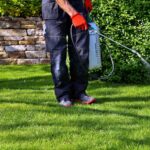I was a Boy Scout back in the day. I did everything that scouts did in the 1970s, including learning to tie knots. I learned everything from the square knot to the half hitch. There wasn’t a knot I couldn’t tie if my life depended on it. But now, in my late 50s, I’m more likely to just pull a strap instead.
Pull a strap? Absolutely. You see, I discovered cam straps a few years ago. A lot of people use them as truck tiedowns. I have seen them deployed to secure ATVs and dirt bikes in pickup trucks. I have seen lawn care providers tie down their edgers and leaf blowers with them. I use the straps in place of rope whenever I can.
Cam Strap Basic Principles
If you are not familiar with the cam strap principle, perhaps you have seen the ratchet straps truck drivers use to secure their cargo to flatbed trailers. Cam straps are similar in design and function. The biggest difference is that they utilize cam buckles rather than ratchets to keep straps firmly in place.
The cam buckle is a metal buckle with two key features: a cam and a spring-loaded clamping mechanism. You feed the nylon webbing strap through the buckle and over the cam. After pulling the strap tight, you just release it. The clamp automatically deploys to apply downward pressure on the strap.
Why include the cam? The designers behind the Rollercam brand say that the cam reduces friction between buckle and strap. This allows you to pull the strap tighter with less force. A well-designed cam strap can be pulled as tightly as a ratchet strap but with more control.
Say Goodbye to Those Knots
Once I discovered cam straps, everything changed. I could finally say goodbye to all those knots I learned as a kid. Here’s just one example: I use cam straps to close that big, bulky box the artificial Christmas tree is stored in.
Artificial tree owners know just what I’m talking about. Once you take a brand-new Christmas tree out of the box, it never goes back in the same way. You can never compress it enough to get it back into the box without the box bulging in the middle. So here’s what I do: I wrap three cam straps around the box in strategic locations. Then I simply pull gently to tighten everything up. That artificial tree will not move until I unpack it the next year.
Before discovering cam straps, I used four nylon ropes tied with double half hitches. The ropes worked well enough; don’t misunderstand. But gently pulling a strap is lot easier than tying two half hitches. Why do things the hard way when I don’t have to?
Knots Aren’t All Bad
I should point out that ropes and knots aren’t all bad. I used to do a lot of repelling as a Boy Scout. There were some very helpful knots I and my fellow scouts employed while doing so. Not only that, but we also used extremely long ropes. I no longer repel, but I can see how cam straps would be an adequate replacement for ropes in this particular sport. So if I were still repelling, I would also be using some of those old knots.
Some of those knots are still stored in my memory banks. But I am more likely to use cam straps instead of ropes nowadays. That’s okay, because pulling gently on a strap is a lot easier than tying knots. I’ll take the easy way out, thank you.





